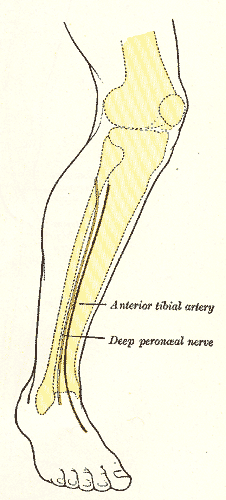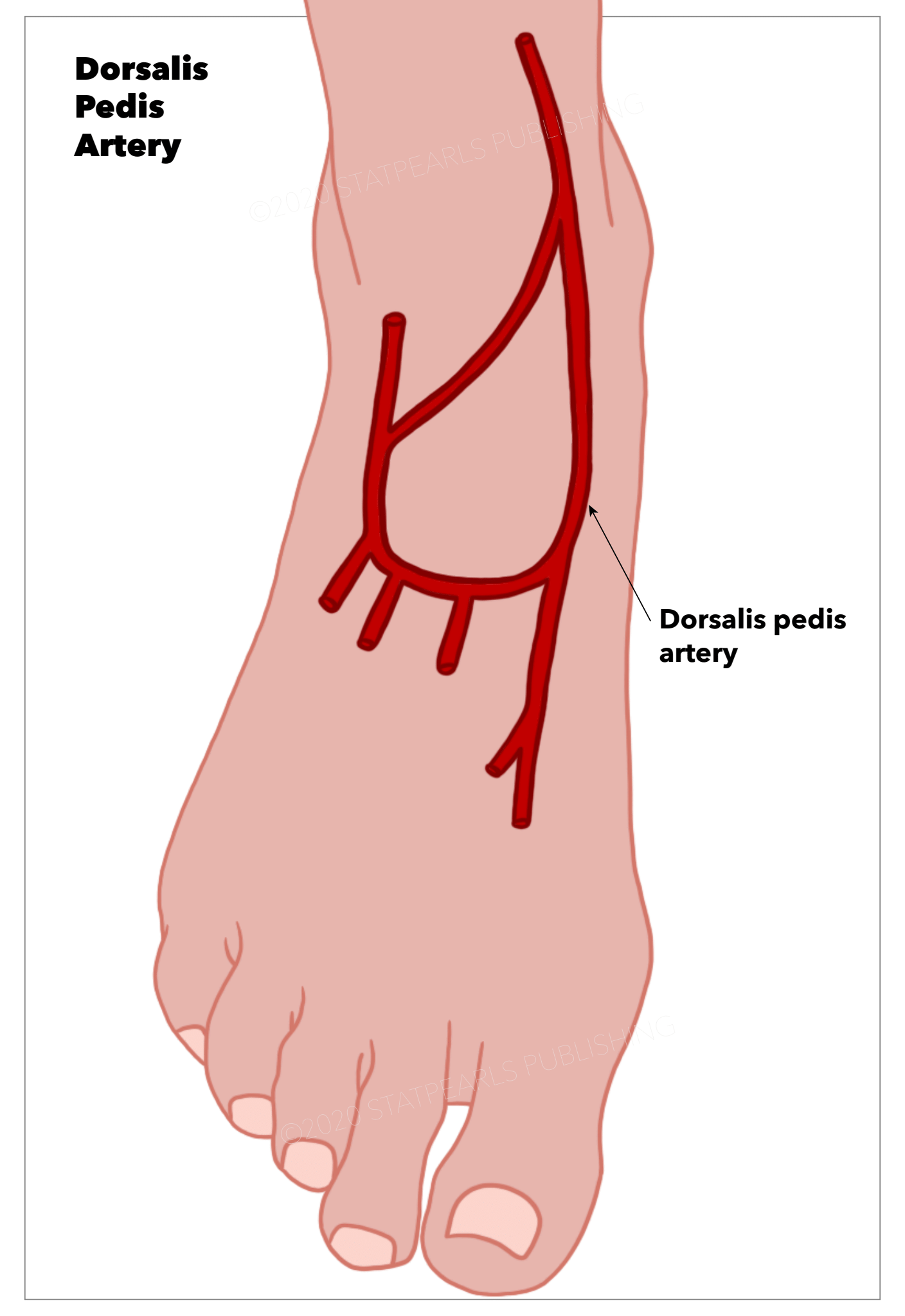[1]
De Maeseneer M, Madani H, Lenchik L, Kalume Brigido M, Shahabpour M, Marcelis S, de Mey J, Scafoglieri A. Normal Anatomy and Compression Areas of Nerves of the Foot and Ankle: US and MR Imaging with Anatomic Correlation. Radiographics : a review publication of the Radiological Society of North America, Inc. 2015 Sep-Oct:35(5):1469-82. doi: 10.1148/rg.2015150028. Epub 2015 Aug 18
[PubMed PMID: 26284303]
[2]
Hardin JM, Devendra S. Anatomy, Bony Pelvis and Lower Limb: Calf Common Peroneal Nerve (Common Fibular Nerve). StatPearls. 2024 Jan:():
[PubMed PMID: 30422563]
[3]
Ntuli S, Nalla S, Kiter A. Anatomical variation of the Dorsalis pedis artery in a South African population - A Cadaveric Study. Foot (Edinburgh, Scotland). 2018 Jun:35():16-27. doi: 10.1016/j.foot.2018.01.002. Epub 2018 May 10
[PubMed PMID: 29753997]
[4]
Mavili E, Dönmez H, Kahriman G, Özaşlamacı A, Özcan N, Taşdemir K. Popliteal artery branching patterns detected by digital subtraction angiography. Diagnostic and interventional radiology (Ankara, Turkey). 2011 Mar:17(1):80-3. doi: 10.4261/1305-3825.DIR.3141-09.1. Epub 2010 Aug 13
[PubMed PMID: 20706978]
[5]
Pomposelli FB Jr, Marcaccio EJ, Gibbons GW, Campbell DR, Freeman DV, Burgess AM, Miller A, LoGerfo FW. Dorsalis pedis arterial bypass: durable limb salvage for foot ischemia in patients with diabetes mellitus. Journal of vascular surgery. 1995 Mar:21(3):375-84
[PubMed PMID: 7877219]
[6]
Chitra R. The relationship between the deep fibular nerve and the dorsalis pedis artery and its surgical importance. Indian journal of plastic surgery : official publication of the Association of Plastic Surgeons of India. 2009 Jan-Jun:42(1):18-21. doi: 10.4103/0970-0358.53007. Epub
[PubMed PMID: 19881015]
[7]
Meissner MH. Lower extremity venous anatomy. Seminars in interventional radiology. 2005 Sep:22(3):147-56. doi: 10.1055/s-2005-921948. Epub
[PubMed PMID: 21326687]
[8]
Dellon AL, Höke A, Williams EH, Williams CG, Zhang Z, Rosson GD. The sympathetic innervation of the human foot. Plastic and reconstructive surgery. 2012 Apr:129(4):905-909. doi: 10.1097/PRS.0b013e3182450be8. Epub
[PubMed PMID: 22456362]
[9]
Pomposelli FB, Kansal N, Hamdan AD, Belfield A, Sheahan M, Campbell DR, Skillman JJ, Logerfo FW. A decade of experience with dorsalis pedis artery bypass: analysis of outcome in more than 1000 cases. Journal of vascular surgery. 2003 Feb:37(2):307-15
[PubMed PMID: 12563200]
Level 3 (low-level) evidence
[10]
McDermott MM, Criqui MH. Ankle-Brachial Index Screening and Improving Peripheral Artery Disease Detection and Outcomes. JAMA. 2018 Jul 10:320(2):143-145. doi: 10.1001/jama.2018.8953. Epub
[PubMed PMID: 29998324]
[11]
Ramavath AL, Cornish JA, Ganapathi M, Williams DT. Missed diagnosis of ankle pseudoaneurysm following ankle arthroscopy: a case report. Cases journal. 2009 Oct 21:2():162. doi: 10.1186/1757-1626-2-162. Epub 2009 Oct 21
[PubMed PMID: 19946533]
Level 3 (low-level) evidence
[12]
Christoforou P, Asaloumidis N, Katseni K, Kotsis T. Dorsalis Pedis Artery Aneurysm: A Case Report and Review of the Literature. Annals of vascular surgery. 2016 Jul:34():271.e5-8. doi: 10.1016/j.avsg.2015.12.011. Epub 2016 May 10
[PubMed PMID: 27174346]
Level 3 (low-level) evidence


